Report of 32nd Meeting: December 14th, 2019
Due to the inclement weather, only a few diehards emerged from their hovels today, but as ever the bonhomie and that rare thing theses days – the opportunity to hear lutes and historical guitars – made the effort worthwhile.
Philip Lord got us off to an interesting start with two Renaissance lute pieces played on his Paul Thomson vihuela. The first was given a fine performance, the second proved a bit more demanding on player and listener, but both were well received.
Bill Samson introduced his new self-made guitar, which has some unusual sources for the main timbers. The soundboard is of “sinker” cedar – trees that were swept down a Canadian river by loggers, only to get stuck in undergrowth, and discovered decades later. One farmer used it for fence posts, with shavings from that eventually finding their way into Bill’s hands. Four panels from the fence posts were needed to form the soundboard of this relatively small Bouchet-influenced guitar. The back and sides were made of walnut from his grannie’s old kitchen table!
Bill played three “lessons” from the second book by by Julio Sagreras, an Argentinian professor of the guitar in the early years of the 20th century. Bill’s playing was fine, really stylish in appropriate ways for the repertoire, and he pulled some beautiful tones out of his instrument. Bravo!
Rob Mackillop for once had nothing prepared, but borrowed Bill’s guitar, and read more Sagreras lessons, including a tremolo piece. Emilio Pujol – an authority on the technique of his teacher, Francisco Tárrega – described the no-nails tremolo as sounding “ethereal”, unlike it’s more articulated nail equivalent. The sound Rob produced was indeed a murmur, very gentle.
Chris Jupp treated his 6c Luke Emmet lute to three fantasias by Francesco da Milano, all found in British manuscripts: N62, N40, and the wonderful N33 which must have been heard – and surely approved of – by John Dowland. We look forward to further 6c adventures by Chris at future meetings.
Stuart McLuckie brought proceedings to a close with a Branle, Corrente and a curiously-timed Galliard in 4/4, all by Emanuel Adriaenssen, which were pleasant enough, at times sounding like 16th-century Belgian pop songs, very tuneful and danceable.
Members seemed reluctant to wander back out into the cold and sodden streets, so a wheen of blethers could be heard for some time. Well done, all.
B&W photies by Rob Mackillop, colour by Bill Samson. Click for larger versions.
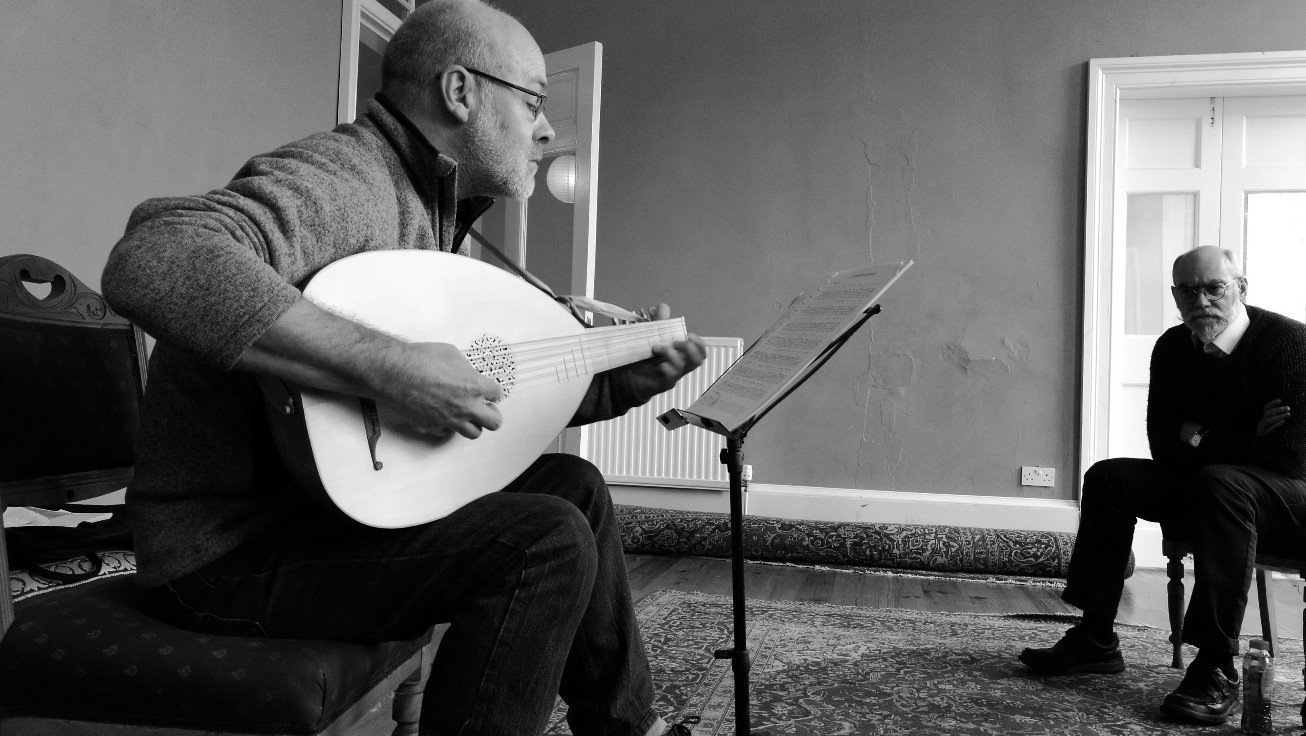
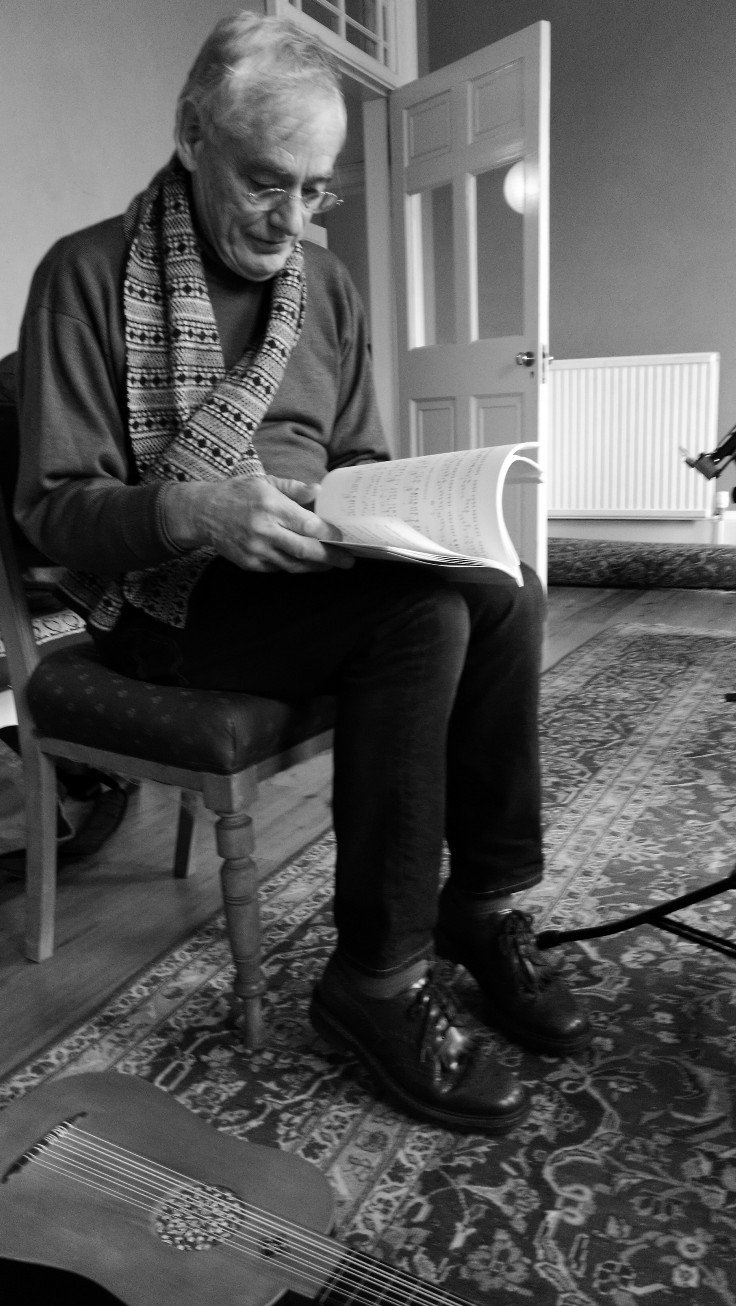

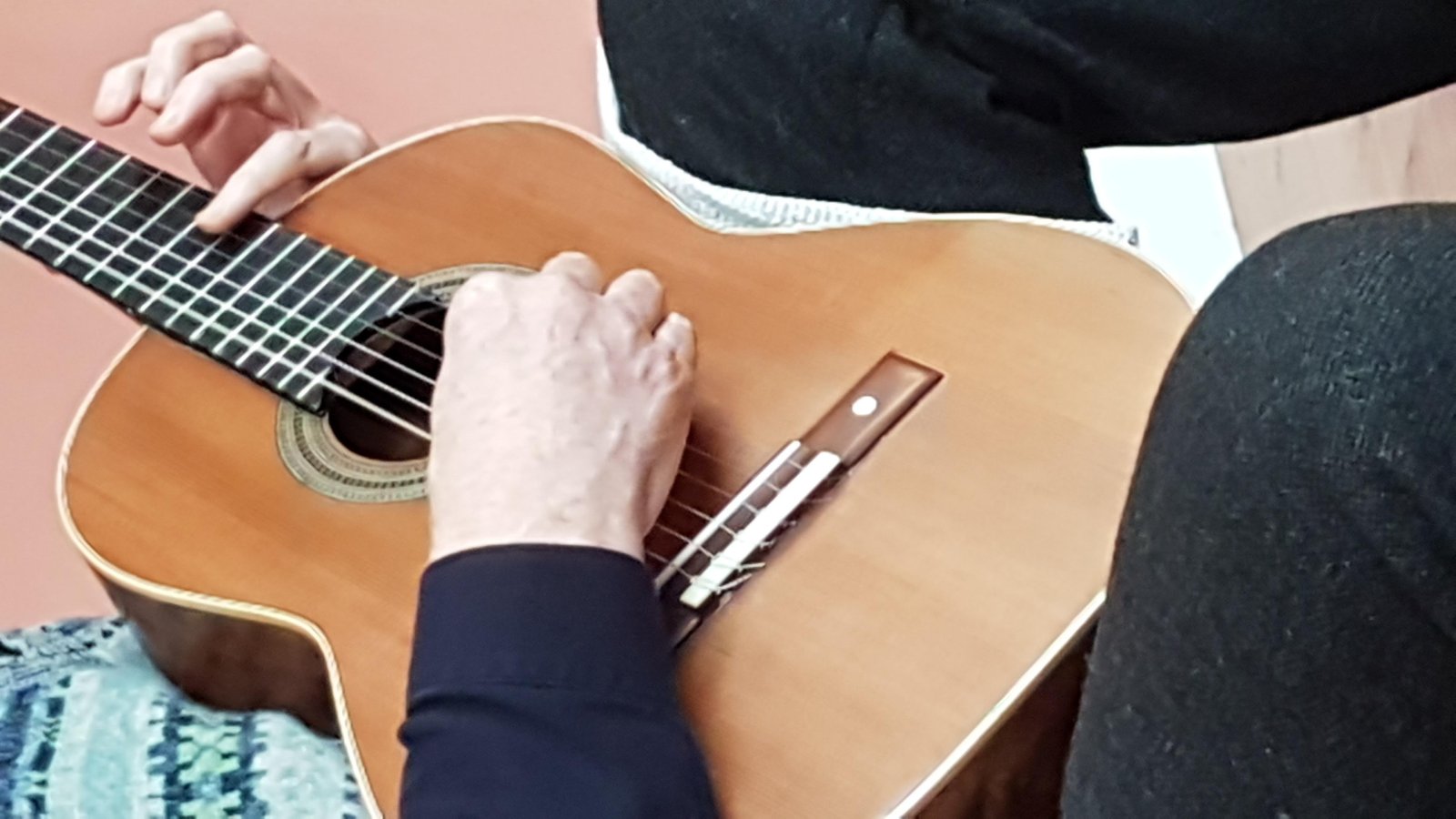

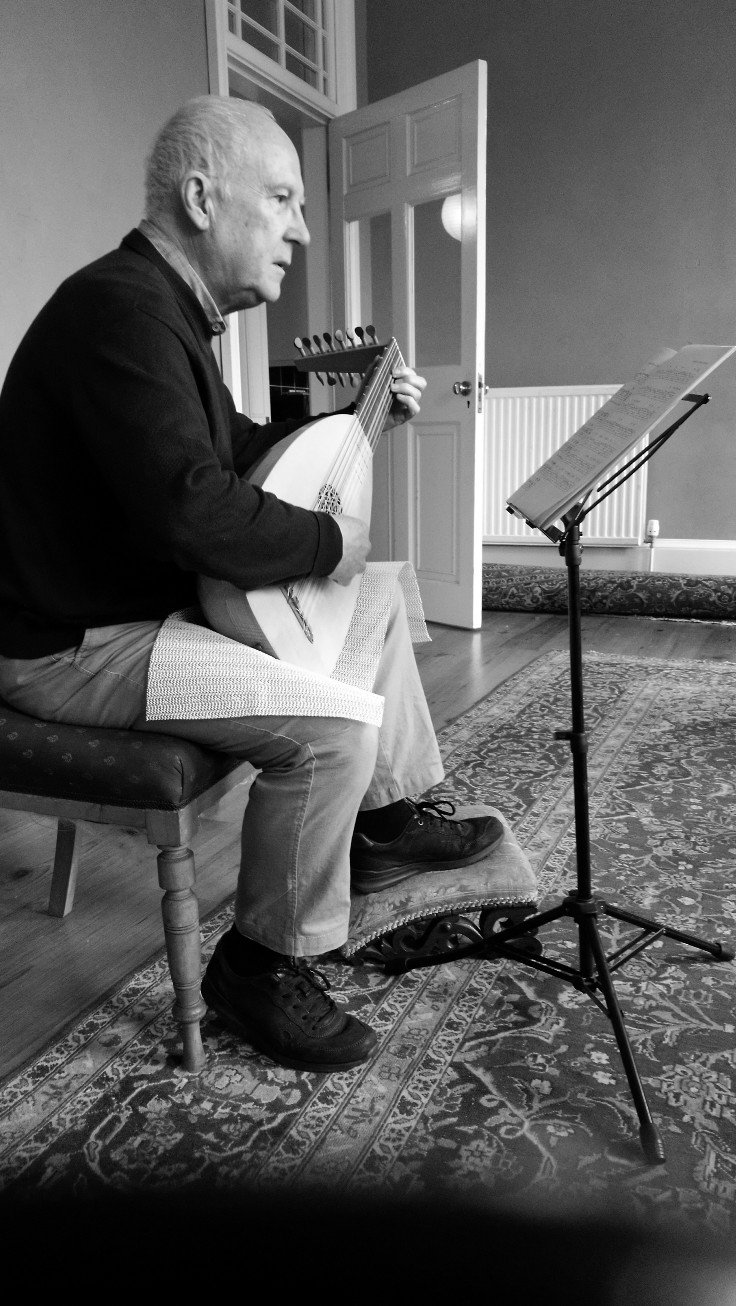


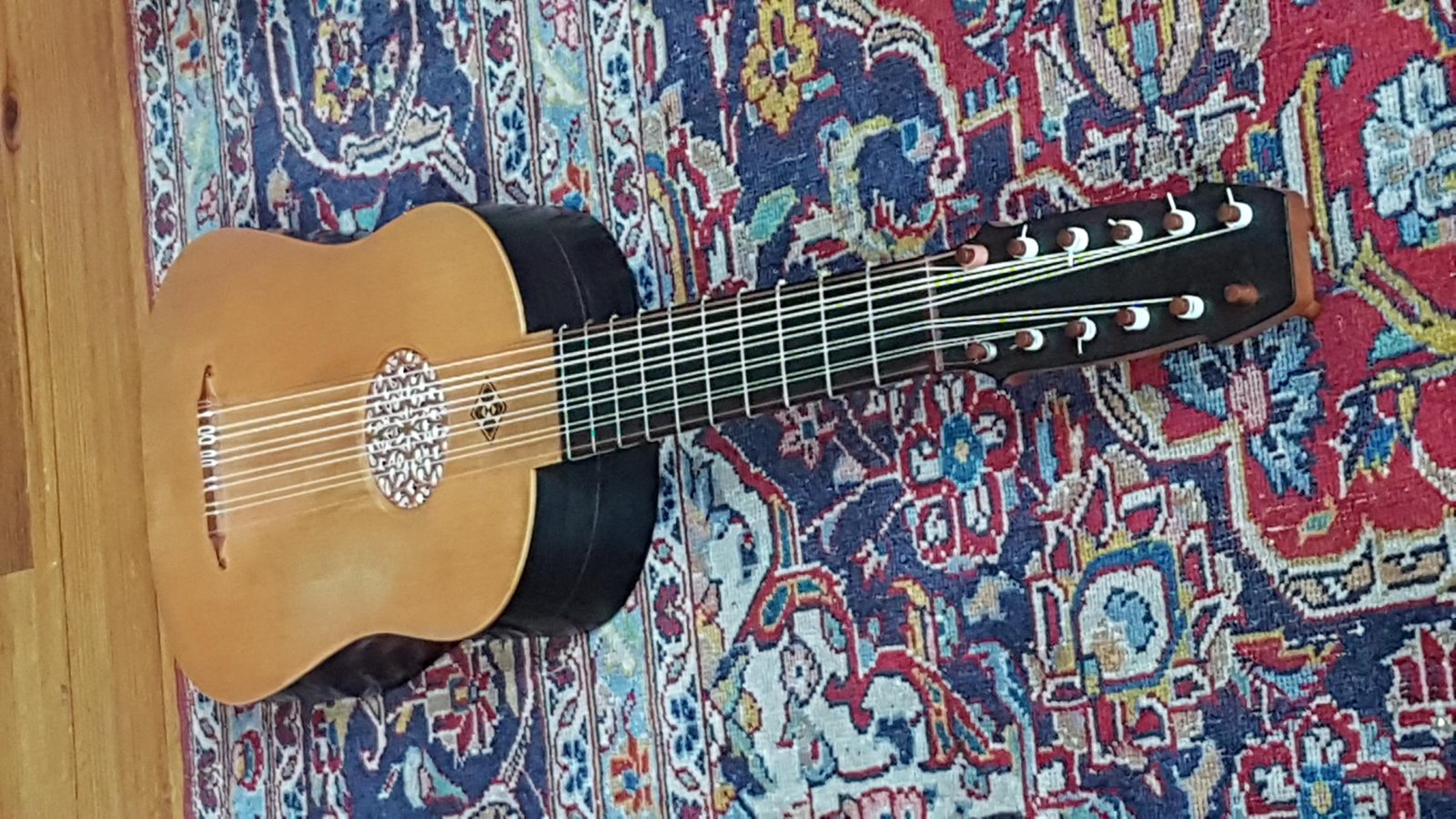
Thank you for your report Rob. I enjoy hearing what you have played. Happy memories of our visit. Sue
>
Cheers, Sue. See you again sometime.